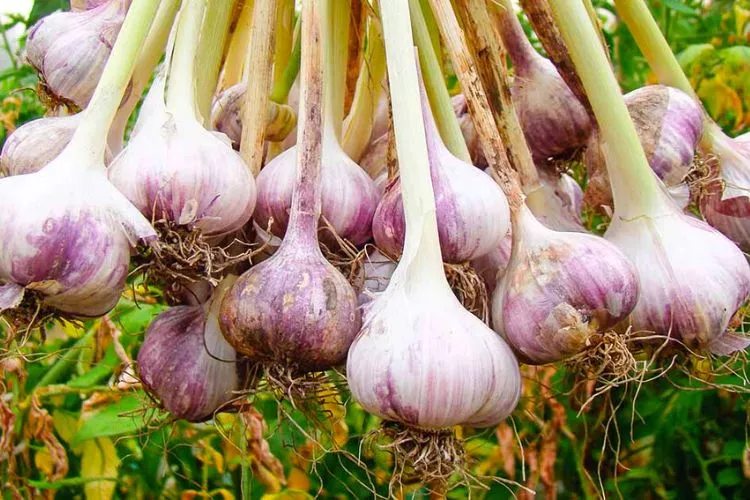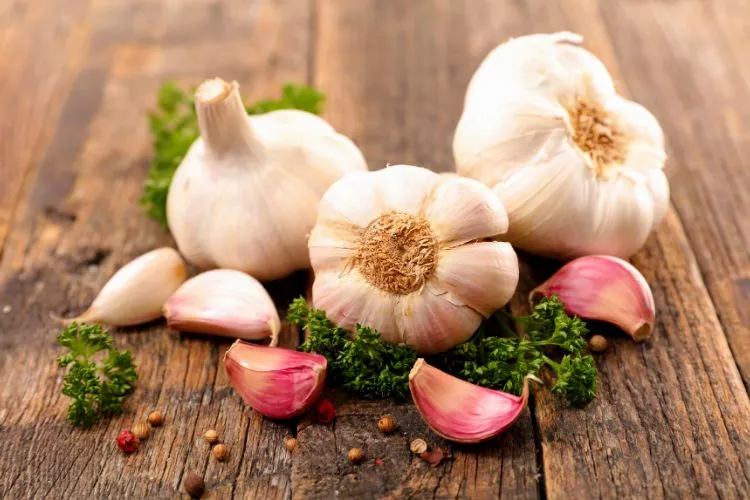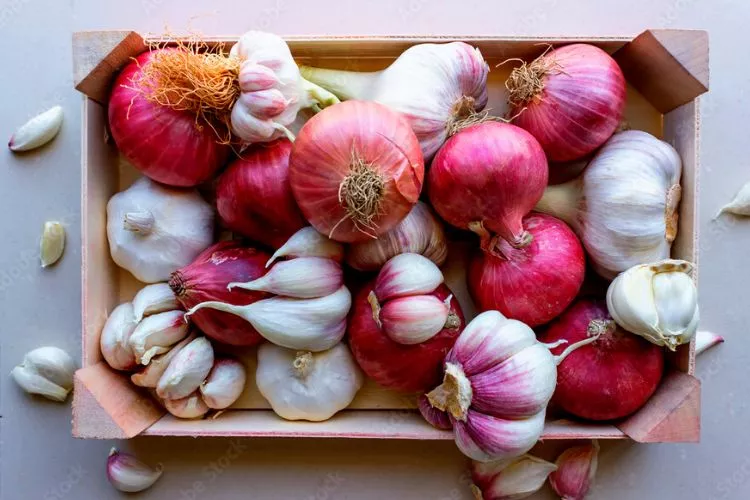When we think of vegetables, we have this general idea of what each one is and their color or shape that we distinguish them by.
But did you know that every type of vegetable belongs to a certain family or group? There are pod types, tubers, stems, and roots, to name a few. Where does garlic fit in, though? Is garlic a vegetable? Is it a herb?
Well, honestly speaking garlic is a mystery plant with a huge range of benefits, such as defending the body against bacteria, viruses, and even parasites.

In this article, we’ll come to a definitive conclusion on the hotly debated topic of what garlic actually is. Let’s do it!
Table of Contents
Is garlic a vegetable or herb?
There is much debate surrounding the correct family placement of humble garlic. Some say herb, others suggest spice but the majority pen it in as a vegetable.
The only way to truly place it is by looking at its characteristics.
A vegetable is characterized when it has any form of the edible part of an herbaceous plant. These include roots, leaves, stems, and bulbs. And guess what, garlic consists of pretty much all of those parts; a bulb, a stem, and a bunch of leaves. Therefore, there is no doubt that garlic is, in fact, a vegetable.
Some other frequently consumed varieties of this species include onion, shallots, leek, and chives.

Now that we have concluded that garlic is a vegetable, we can look at the family it belongs to. There are many different families, and they are generally tied to the plant’s characteristics.
For example, corn belongs to the ‘grasses’ family, eggplant and peppers are part of the ‘nightshade’ clan, and broccoli and cauliflowers are cabbages or ‘crucifiers.’ Given garlic’s unique bulb and stem attributes, though, they fall into the ‘onion’ family by default.
Just to be clear, let’s quickly look into why garlic isn’t a spice or herb. According to ASTA, there’s no way that garlic can be considered a spice as it simply isn’t used in a way that spices are traditionally prepared, utilized, and consumed. It is also clearly stated not to be on the list as a spice.
Furthermore, a herb is considered any seed-bearing plant that does not have a woody stem and dies down to the ground after flowering. Garlic does not have woody stems, so it cannot be distinguished as a herb.
Surprisingly, bananas are technically a herb as they follow the growth patterns of one. Who would have thought?
What other vegetables belong to the same category as Garlic?
Garlic is a vegetable that belongs to the onion family or ‘Alliums.’ Many other plants fall into this family. However, the most common include:

- Bulb onions: There are wide varieties, but they are split into 3 categories. Short day, intermediate and long day. The names determine how many hours of sunlight each type needs to form their respective bulbs. Short days need around 10 hours per day, intermediate around 12-13, and long days generally require around 15 hours per day. All of these onion types can be used in a range of different ways. Including salads, stir fries, roasting, on the grill, etc.
- Leeks: This onion type is tall and dense with edible long, green leaves. They are best suited in soups, pies, and quiches.
- Chives are great for those with minimal space but who want maximum yield. This onion type can grow all year round and almost seems like an endless supply when grown correctly. It’s a great flavor punch for salads, sandwiches, and as garnish.
- Shallots: Shallots are grown in clusters of as many as a dozen. They are smaller, more elongated brown onions that are commonly used in many Asian style dishes.
- Spring Onions: These onions grow bulbs but are harvested before doing so to ensure the green stems are in their most ripe condition. Spring onions are extremely versatile. They can be eaten raw or cooked, depending on the cuisine.
- Bunching Onions: A.K.A. Welsh onions. These bad boys don’t form bulbs and are great for salads. The top of them almost looks like shallots or spring onions.
